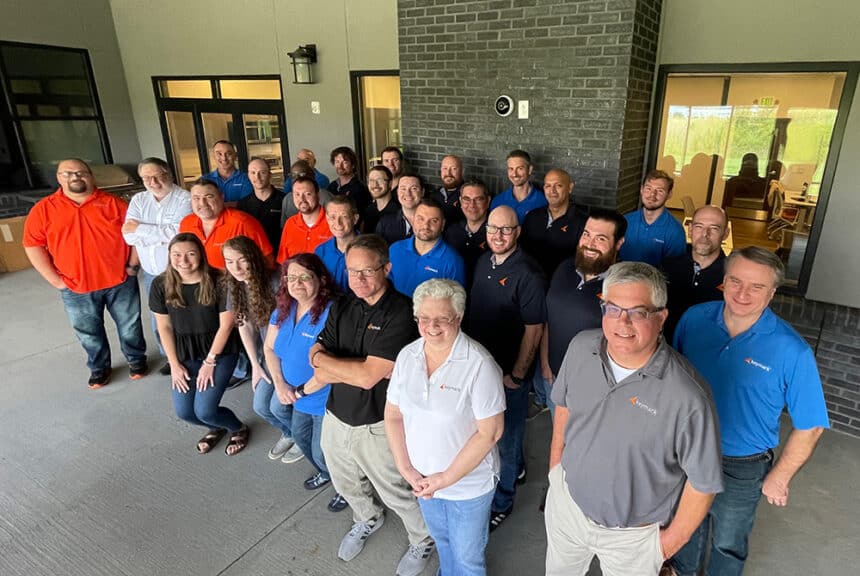Many in the public sector are starting to utilize Robotic Process Automation (RPA) technology with highly effective results.
RPA helps businesses automate their processes by taking menial and repeatable tasks off overloaded workers. It not only frees employees to perform more strategic and knowledge-based work but also allows them to spend more meaningful time with customers or constituents.
When compared with other intelligent automation technologies, RPA has a relatively short implementation period. It’s also ideal for helping organizations start moving away from conventional ways of working toward more sophisticated technologies (think artificial intelligence and machine learning) in the future.
So why aren’t more state government agencies utilizing RPA, especially when their workers are typically overloaded as it is?
One of the biggest challenges that many state agencies face is simply getting started. The truth is that a lot of agencies have a tough time figuring out which of their processes are ideal for RPA, then thinking through how they would train their human workforce to rethink the way things have always been done.
6 Things To Keep in Mind
With more and more state agencies recognizing that RPA is the way of the future for government, we thought it would be helpful to put together a few pointers for getting started. First discussed at the General Services Administration’s (GSA) emerging technology symposium, “Future Services Now,” here are six general steps for adopting RPA at your government agency:
- Intake
- Prioritize
- Evaluate / Optimize
- Develop
- Deploy
- Operate and maintain
While all six considerations above are important for adopting RPA, the first three should be the focus for getting started.
1. Intake
One of the first steps is deciding which tasks would be the most beneficial to automate. Ask yourself: what are the types of things that we do over and over again which take precious time away from helping our constituents or performing higher-value tasks? Whether you collect these ideas via a Google form, a spreadsheet, an email thread or even pen and paper, it’s important to gain input and buy-in from everyone.
2. Prioritize
Once all of the ideas have been submitted, leadership should take a look at all of the potential processes to be automated and prioritize them according to your agency’s day-to-day needs and greatest potential benefits. It’s important to take into consideration:
- Current processes
- How much employee time is spent on the task
- The number of specific systems involved
- Any errors that occur throughout the duration of the process
After weighing the above considerations, it may be discovered that some of the processes that you thought could easily be automated are more complex that you initially thought and should be eliminated from your list altogether. If so, simply move onto the next potential process.
If you need help considering what types of activities can be automated, read our blog 63 Manual Processes that Bots Can Do Better.
3. Evaluate / Optimize
After a specific process is chosen for RPA, then comes the evaluation and optimization stage. One of the first things to evaluate is whether the process should utilize an unattended robot or an attended robot – also called bots, or digital workers.
An unattended bot acts completely autonomously and does not require human intervention, whereas an attended bot might perform a specific task, such as entering information into a database, and then require human approval before the task is completed. Both unattended and attended bots present vast opportunities for most state government agencies.
Once the type of bot is determined for the process at-hand, the next part is to break down the process step-by-step and look for opportunities for improvement. In many cases, we can help you optimize your processes simply by automating, combining or eliminating unnecessary steps.
4.-6. Develop, Deploy and Maintain
After a process has been thoroughly evaluated and optimized, it’s time to develop and deploy a bot to handle that specific task. Your work isn’t finished once you’ve deployed the bot either. That’s because you will need to evaluate its effectiveness over time, keeping what works, looking for opportunities for improvement and modifying the bot to make it better. This continuous evolution requires just as much employee input as detailed in step 1.
Last But Not Least
One of the biggest concerns that many government agency employees have is that RPA will replace them. However, RPA doesn’t necessarily mean that people will lose their job. In many cases, quite the opposite is true: RPA can actually improves the lives of state government workers and makes their jobs easier. After all, who doesn’t like the idea of trading in your most monotonous, low-level tasks for those that require your experience and critical thinking skills? By leveraging RPA, state agency workers can work alongside smart technology, enhancing their skills and using their time more wisely. It’s truly a win-win for everyone.
Your Public Sector RPA Partner
Building RPA into your agency’s digital transformation strategy can be relatively easy if you select the right partner. We have helped a number of agencies in the public sector automate their processes to reduce operational costs and boost productivity. Interested in learning more? Contact us today to start the conversation.
Read more about Establishing the Need for RPA in State Government.
Take the Next Step
We can help you decide pretty quickly whether this would be a good fit for your organization. With 20+ years of experience in automation, we just need about 5 minutes of Q&A.



